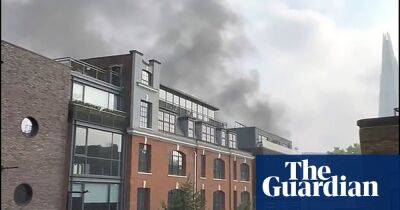‘A lot of challenges’: can housing industry build homes habitable in high temperatures?
As anyone sweltering in the current UK heatwave can attest, the country’s housing stock is woefully unsuited to heat.
Much of it is antiquated, dating from a time when the priorities were protecting from the cold and rain. Yet most new-build properties are similarly unready for experts’ predictions that, by the middle of the century, there will be temperatures on the level of summer 2018’s highs every other year.
The climate change committee warned in a report last year that more than 570,000 residences had been constructed since 2016 that were not resilient to high temperatures – and nor were a further 1.5m due to be built over the following five years.
The government advisers accused ministers of failing to act to protect people from rising temperatures that “could even leave many existing and new homes uninhabitable”.
The problem is deadly serious, as vulnerable people struggle to keep cool in their own beds. The committee noted that 2020’s heatwave in England killed more than 2,500 people, and warns that the number of heat-related deaths could triple by 2050.
Heat not only poses a threat to life but also to the structural integrity of buildings, causing walls to crack. In 2018 – the joint hottest UK summer so far alongside 1976, 2003 and 2006 – there was a spike in subsidence as the soil below buildings dried out and contracted, with more than 10,000 households subsequently making insurance claims worth £64m in just three months.
Critics accuse housebuilders, property developers and the government of being slow to respond. “The housing industry is quite traditional and old-fashioned in adapting and there are a lot of challenges that we need to deal with around zero-carbon and future-proofing,” says James Knight, of design
Read more on theguardian.com






















